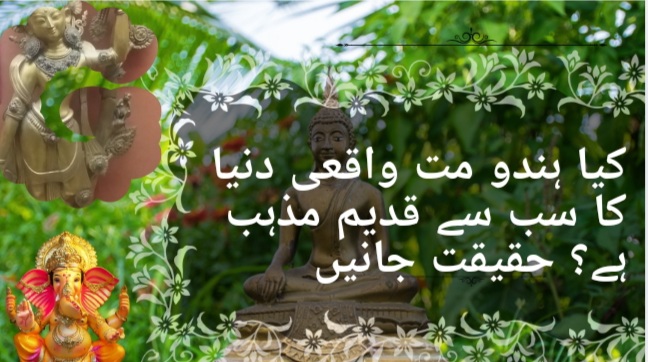- بہائی مذہب کی مختصر تاریخ
بہائی مذہب کی بنیاد 19ویں صدی میں ایران میں رکھی گئی۔ اس کے بانی باب اور بیابانی (Bahá’u’lláh) تھے۔ باب نے 1844 میں اپنی نبوت کا اعلان کیا اور انسانیت کو ایک نئے الٰہی دور کی خوشخبری دی۔ ان کے بعد بیابانی نے 1863 میں اپنی نبوت کا اعلان کیا اور اس مذہب کو مکمل کیا۔ بہائی مذہب انسانی اتحاد، عالمی امن، اور مختلف مذاہب کی یکسانیت پر زور دیتا ہے۔
اسلام اور دیگر مذاہب کی تعلیمات کو سمجھنے کے لیے یہاں تفصیلی معلومات دستیاب ہیں:
اسلام سے متعلق مضامین
اسلام پر مزید معلومات
بہائی مذہب کے نظریات
بہائی مذہب کے بنیادی نظریات میں اللہ کی واحدانیت، تمام مذاہب کی یکسانیت، انسانی مساوات، اور تعلیم کی اہمیت شامل ہیں۔ یہ مذہب سائنس اور مذہب کے اتحاد پر یقین رکھتا ہے اور کہتا ہے کہ دونوں حقائق کی تلاش کے مختلف ذرائع ہیں۔
بہائی مذہب کے اصول اور اسلام کے عقائد کے موازنے کے لیے مزید معلومات یہاں ملاحظہ کریں:
ایکسٹرنل ویب سائٹ پر جائیں
بہائی عبادات کا طریقہ
بہائی مذہب میں عبادات کا طریقہ منفرد ہے۔ روزانہ کی نماز، اجتماعی دعا، اور عبادت گاہوں میں اجتماعی عبادات اس مذہب کے اہم حصے ہیں۔ دہلی کا “لوٹس ٹیمپل” بہائی عبادت گاہ کی ایک شاندار مثال ہے۔
مسلمانوں سے اختلافات
بہائی مذہب اور اسلام کے درمیان کئی بنیادی اختلافات ہیں۔ مسلمانوں کے نزدیک حضرت محمد ﷺ آخری نبی ہیں، جبکہ بہائی مذہب نئے نبیوں کو قبول کرتا ہے۔ قرآن کو آخری الٰہی کتاب ماننے کے برخلاف بہائی مذہب بعد کی الٰہی ہدایات کو بھی تسلیم کرتا ہے۔
بہائی پیروکار اور ان کی آبادی
بہائی مذہب کے پیروکار دنیا بھر میں موجود ہیں، جن کی تعداد 7 سے 8 ملین کے درمیان ہے۔ ہندوستان، امریکہ، ایران، اور افریقہ کے کئی ممالک میں ان کی بڑی تعداد موجود ہے۔
بہائی ثقافت اور رسومات کے بارے میں مزید جاننے کے لیے یہ ویڈیوز دیکھیں:
یوٹیوب پر ویڈیو ملاحظہ کریں
ٹک ٹاک ویڈیو دیکھیں
اہم تہوار اور رسومات
بہائی مذہب کے اہم تہواروں میں نوروز، ریضوان، باب کی پیدائش، اور بیابانی کی پیدائش شامل ہیں۔ یہ تہوار ان کے عقائد اور مذہبی تاریخ کا اہم حصہ ہیں، جو ان کے روحانی اتحاد کو ظاہر کرتے ہیں۔
بہائی مذہب ایک منفرد مذہب ہے جو انسانیت کی مساوات، امن، اور ترقی پر زور دیتا ہے۔ اگرچہ اس کے اصول عالمی امن اور اتحاد کو فروغ دیتے ہیں، لیکن اسلام اور دیگر مذاہب کے ساتھ اس کے عقائدی اختلافات بھی نمایاں ہیں۔
مزید معلومات کے لیے:
Baháʼí Faith: A Comprehensive Overview
The Baháʼí Faith is one of the world’s youngest religions, founded in the 19th century in Iran. It emphasizes the unity of humanity, global peace, and the oneness of all religions. Below is a detailed overview of its history, ideology, population, worship practices, prominent figures, differences with Islam, and major festivals.
1. History (Date-wise)
The Baháʼí Faith originated through two pivotal figures, the Báb and Baháʼu’lláh. Both played significant roles in shaping the religion and its teachings.
Key Historical Events:
- 1844:
The Báb (Siyyid ʻAlí Muḥammad Shírází) declared himself as a messenger of God, paving the way for the arrival of a new divine figure. - 1850:
The Báb was executed by the Iranian government for apostasy, and his followers faced severe persecution. - 1863:
Baháʼu’lláh announced his prophetic mission in Baghdad, declaring himself the fulfillment of the Báb’s prophecy. This event, known as the Declaration of Ridván, is a cornerstone of Baháʼí history. - 1868:
Baháʼu’lláh was exiled by the Ottoman Empire to Acre (modern-day Israel), where he spent the rest of his life writing and organizing the faith. - 1892:
After Baháʼu’lláh’s death, his son, ʻAbdu’l-Bahá, took charge of spreading the Baháʼí Faith globally. - 20th Century:
The religion gained international recognition, and Baháʼí communities established Houses of Worship worldwide, with the Baháʼí World Centre in Haifa, Israel, becoming a central hub.
For detailed insights into Islamic teachings and history, refer to:
2. Ideology
The Baháʼí Faith’s core principles focus on spiritual development, social justice, and the unity of humankind.
Key Beliefs:
- Oneness of God:
The Baháʼí Faith recognizes one God who has revealed His will through various prophets over time. - Unity of Religions:
All religions are seen as chapters of one divine book, guiding humanity according to the era’s needs. - Human Equality:
It rejects all forms of discrimination, emphasizing gender, racial, and economic equality. - Education for All:
Education is considered a universal right, with equal opportunities for men and women. - Global Governance:
The Baháʼí Faith advocates for a unified global government to ensure peace and justice. - Science and Religion:
It calls for harmony between science and religion, viewing them as complementary forces for understanding truth.
Learn more about comparative beliefs through this external link:
Visit External Website
3. Followers and Population
The Baháʼí Faith has an estimated 7-8 million adherents worldwide, with communities in almost every country.
Country-wise Population:
- India:
Home to the largest Baháʼí community, with approximately 2 million followers. The iconic Lotus Temple in Delhi is a symbol of Baháʼí worship. - United States:
Over 180,000 adherents actively practice and promote the faith. - Iran:
The birthplace of the faith, though followers face severe persecution and restrictions. - Africa (Kenya and Uganda):
Baháʼí teachings have gained significant traction in parts of Africa. - Israel:
The Baháʼí World Centre in Haifa is the religion’s spiritual and administrative heart.
Explore Baháʼí culture and rituals further through these videos:
4. Worship Practices
Baháʼí worship is distinct from traditional religious practices and emphasizes individual and communal spirituality.
Key Aspects:
- Daily Prayer:
Baháʼís perform one of three prescribed prayers each day, based on personal choice. - Houses of Worship:
Open to people of all religions, Baháʼí temples serve as places for communal prayer and meditation. - Devotional Gatherings:
Every 19 days, Baháʼí communities hold spiritual gatherings to foster unity. - Scripture Reading:
Regular study and reflection on Baháʼí writings are integral to spiritual growth.
5. Prominent Figures
- Baháʼu’lláh:
The founder of the Baháʼí Faith, who laid out its principles and teachings. - ʻAbdu’l-Bahá:
Baháʼu’lláh’s son, who spread the faith globally and emphasized service to humanity. - Shoghi Effendi:
The third leader, responsible for establishing the religion’s administrative framework.
6. Differences with Islam
Though the Baháʼí Faith recognizes Islamic teachings, there are significant doctrinal differences:
- Finality of Prophethood:
Islam regards Prophet Muhammad ﷺ as the last prophet, whereas Baháʼís believe in continuing divine guidance through new prophets. - Scripture:
While Islam upholds the Quran as the final revelation, the Baháʼí Faith accepts later texts authored by Baháʼu’lláh. - Concept of Jihad:
Islam includes the concept of Jihad, while the Baháʼí Faith entirely rejects violence and warfare. - Worship Practices:
Islamic rituals like Salah, fasting during Ramadan, and Hajj differ significantly from Baháʼí practices.
7. Major Festivals
The Baháʼí Faith celebrates several festivals, reflecting its spiritual and historical milestones:
- Naw-Rúz:
The Baháʼí New Year, celebrated on March 21. - Ridván:
A 12-day festival (April 21-May 2) marking Baháʼu’lláh’s declaration of his mission. - Birth of the Báb:
October 20 celebrates the Báb’s birth. - Birth of Baháʼu’lláh:
November 12 honors the founder’s birth. - Unity Feast:
Celebrated to foster community harmony and spiritual growth.
The Baháʼí Faith is a unique religion emphasizing peace, unity, and equality. Despite its progressive ideals, it faces challenges in aligning with other faiths due to doctrinal differences.
Explore more on this topic:




